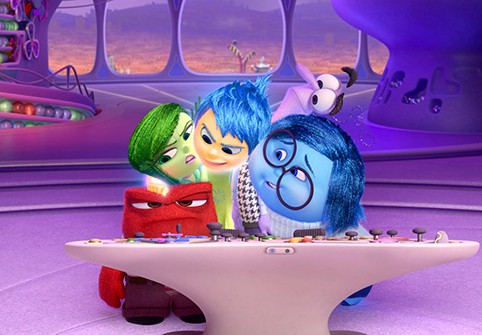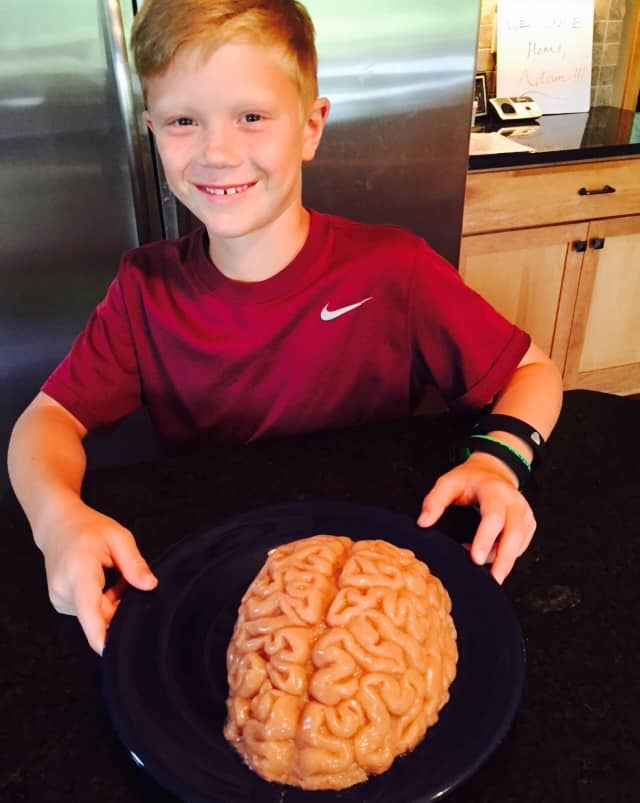12 Ways to use Inside Out to Teach SEL, STEM, and Life’s Ups & Downs

Hopefully, you acted upon Carri Schneider’s Smart Parents tip to see Inside Out.
Now that you’ve seen the movie (or even if you haven’t), below are 12 ways teachers and parents can help kids extend and apply what they saw in the movie to use as a springboard to teach about the brain, Social Emotional Learning (SEL), and life in general.
In his book Raising an Emotionally Intelligent Child, John Gottman describes how parents and teachers can serve as emotion coaches. “Much like athletic coaches, they teach their children [and students] strategies to deal with life’s ups and downs,” said Gottman.
This concept of coaching is key, as it puts our kids – not parents or teachers – at the center. As I watched the movie, I thought of times how tempting it can be to coax the emotion (e.g. trying to pull joy out of an otherwise upsetting circumstance) rather than coach it (honor the emotion and talk about it as Gottman advises).
Watching Inside Out, I wished it were around when I was teaching high school psychology, and I’m thankful it is around now as we do our best as parents to help our three sons process emotions. Drawing from my experiences as a teacher and what I continue to discover as a parent, here are 12 tips for how to use Inside Out to help kids learn about the brain, emotions, and themselves:
- Learn about the science of the brain. Familiarize kids with “brain words” like cerebral cortex, axons, dendrites or hypothalamus. In a blog published on Neurologica, neurologist Steven Novella dissects the metaphors used in Inside Out to represent the working functions of the brain (he concludes that some aspects were portrayed more accurately than others). Awesome STEM topic!
- See a live performance and talk about emotions. I am consistently struck by the power of the performing arts for SEL and content learning. I recently had the opportunity to see Les Miserables. The whole show was ripe for discussing emotions – and some lyrics, such as those from the song Red and Black – make the connections to emotions even more obvious: “Red, I feel my soul on fire; black, the color of despair.”
- Read related non-fiction books. Magination Press has published a series of “What to Do Guides” (e.g. What to Do When Your Temper Flares) that come in workbook form and provides strategies for kids (and adults!) to apply when they feel angry, when worrying, when brains get stuck, or when downright grumpy.
- Use an app like Happify. This app will walk kids and parents through activities that are “de-stressors.” Thanks to Happify, I’ve walked through several activities and games with our boys that provide fun ways to practice gratitude, learning breathing techniques, and enjoy a sense of calm.
- Dissect the memory process. Dissect the lingo and explain differences between short-term and long-term memories. Learn about encoding, storage, retrieval of memories, executive function and more.
- Write about emotions and memory. Consider how memories can be constructed and reconstructed differently. In one memory portrayed within Inside Out, Riley initially labeled a memory “sad” because she thought she caused her team to lose. Upon further reflection, she realized it was also a “joyful” memory because she realized her parents and teammates were there for her. Writing and reflecting can help with ups and downs.
- Talk (and Listen!) with your kids. As with the above example, talk about how different memories can be viewed from diverse perspectives and how they can change over time. Parents can coach kids through the process. Check out “How to Talk so Kids Will Listen and Listen so Kids will Talk.”
- Compare humans and animals. Talk about executive function and the fact that humans have the capacity, through the executive function process (primarily operated in the frontal lobe that distinguishes us from primates)
- Read fiction and talk about emotions. Carri mentioned that an Amazon search generated more than 3,000 titles for children’s books about emotions and referenced one of her favorites, the WorryWoos series.
- Help kids recognize what they can and can’t control. Many things in life are beyond our control, yet we can also shape how kids think of them. Read more about focusing on effort (and recognizing outcome can’t always be controlled) in this piece about lessons for life and learning.
- Make memories your kids will draw from. Most of these kinds of lessons happen naturally – in the everyday moments of life.
 Eat about it. While there are a lot of lessons that I hope my psychology students remember – I think there’s one that most of them DO remember – one day every year we “ate brains.” Seeing this movie and writing this blog reminded me I was overdue to make a brain jello for our kids.
Eat about it. While there are a lot of lessons that I hope my psychology students remember – I think there’s one that most of them DO remember – one day every year we “ate brains.” Seeing this movie and writing this blog reminded me I was overdue to make a brain jello for our kids.
While it’s been long known that identifying and talking about emotions can help anyone when “life feels upside down,” Inside Out helped bring that to life in a way that especially speaks to kids as they watched Riley process the move from Minnesota to California.
It’s also important to remember that life’s not always easy, especially when there can be complicating factors with peers, adolescence, ADHD, autism, family stressors and more. I try to look at this less as something to master (I’m far from it!) and more as something to explore (and eat).
For more on Inside Out, check out:
- Smart Parents Tip: See Inside Out
- The NPR Interview with Director Pete Docter
- Inside Out is Something Truly Special, Even for Pixar
- All the Feels
- Why The Key Character in Inside Out is the One that Isn’t There
For more on parenting and social emotional learning, see:







0 Comments
Leave a Comment
Your email address will not be published. All fields are required.